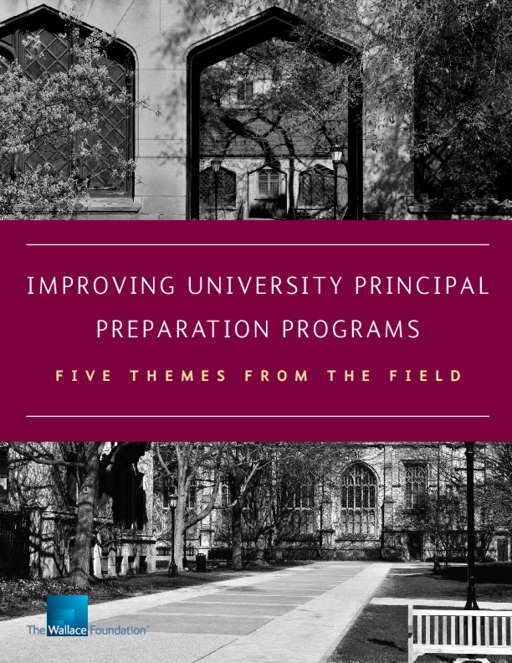Back to Overview
Improving University Principal Preparation Programs
Table of Contents
- Author(s)
- Jacquelyn Davis
- Publisher(s)
- The Wallace Foundation
Page Count
19 pages
Implementation Tips
States have two especially important levers for improving principal quality: oversight of preparation programs and principal licensure.
The University Council for Educational Administration identified five areas where state policymakers could have the greatest impact on principal quality, based on research:
- An explicit principal selection process that includes targeted recruitment and performance-based assessments.
- Clinically rich internships for aspiring principals. These include experiences that are tightly integrated with the curriculum, are 300 or more hours, and provide mentors.
- Strong university-district partnerships. These partnerships entail things like collaboration on candidate selection, district provision of clinically rich internships, and university programming that meets district needs.
- Program oversight that requires state review at specified intervals. Typical features include: documentation and/or site visits, an experienced oversight team, and feedback to improve practice.
- Strong principal licensure requirements. Sample features requirements would include: three or more years of teaching, a master’s degree in educational leadership or related field, and completion of an approved preparation program.
The American Institutes for Research identified 18 research-based indicators of state policy that supports best practice for principal preparation. The indicators fell nto these categories:
- Increased oversight of university preparation programs
- Targeted recruitment and improved candidate selection
- Cohort structures so that groups of principal candidates move through university preparation programs together
- Evaluations based on standards attainment rather than course completion
- Clinical internships that last at least 300 hours and expose candidates to multiple school sites and students with diverse learning needs
- A formal process for continuous program improvement based on graduate impact data
- Competency-based candidate licensure and licensure renewal based on evidence of the principal’s effectiveness in areas including student learning improvement
Topics:

